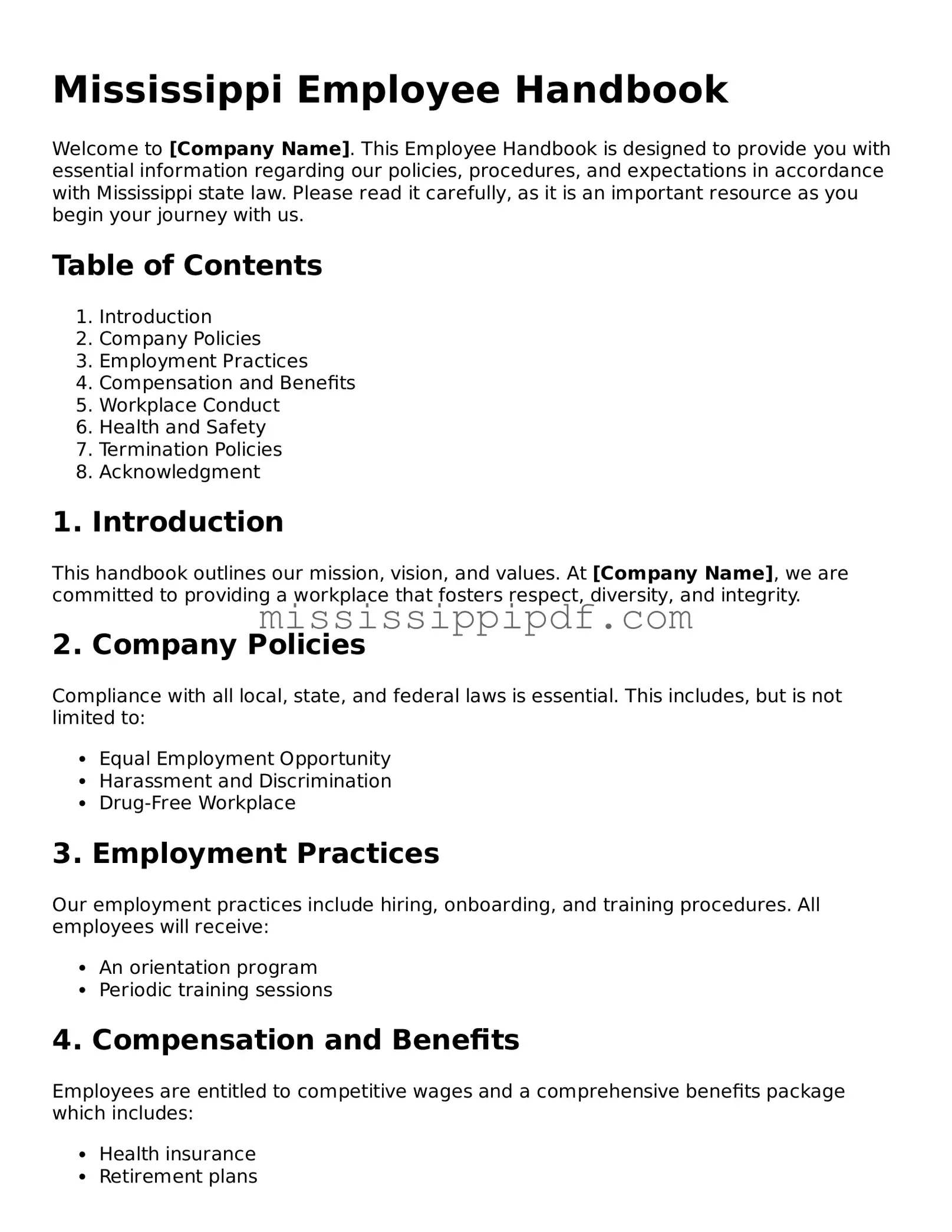The Mississippi Employee Handbook is similar to an Employee Manual. Both documents serve as essential resources for employees, outlining company policies, procedures, and expectations. An Employee Manual typically includes information about workplace conduct, benefits, and disciplinary actions, much like the Employee Handbook. Both documents aim to create a clear understanding of the workplace environment, helping employees navigate their roles and responsibilities effectively.
Another document comparable to the Employee Handbook is the Orientation Guide. An Orientation Guide is often provided to new hires to familiarize them with the company's culture, values, and policies. While the Employee Handbook serves as a comprehensive reference for all employees, the Orientation Guide is more focused on onboarding. Together, they ensure that employees have a solid foundation upon which to build their careers within the organization.
For those looking to transfer ownership of a trailer, the vital California Trailer Bill of Sale form is an indispensable tool. By utilizing this form, you can ensure that all necessary details are accurately documented. For your convenience, access the form by following this link: important trailer bill of sale details.
The Code of Conduct is another important document that shares similarities with the Employee Handbook. Both documents address acceptable behavior and ethical standards within the workplace. The Code of Conduct usually provides specific guidelines on professional conduct, conflicts of interest, and compliance with laws and regulations. In contrast, the Employee Handbook may cover a broader range of topics, but both aim to promote a respectful and productive work environment.
Lastly, the Policy Manual is akin to the Employee Handbook in that it outlines the rules and regulations governing the workplace. The Policy Manual often delves into specific policies regarding leave, harassment, and safety procedures. While the Employee Handbook may summarize these policies, the Policy Manual provides detailed explanations and procedures. Together, they ensure that employees understand their rights and obligations, fostering a safe and compliant workplace.
